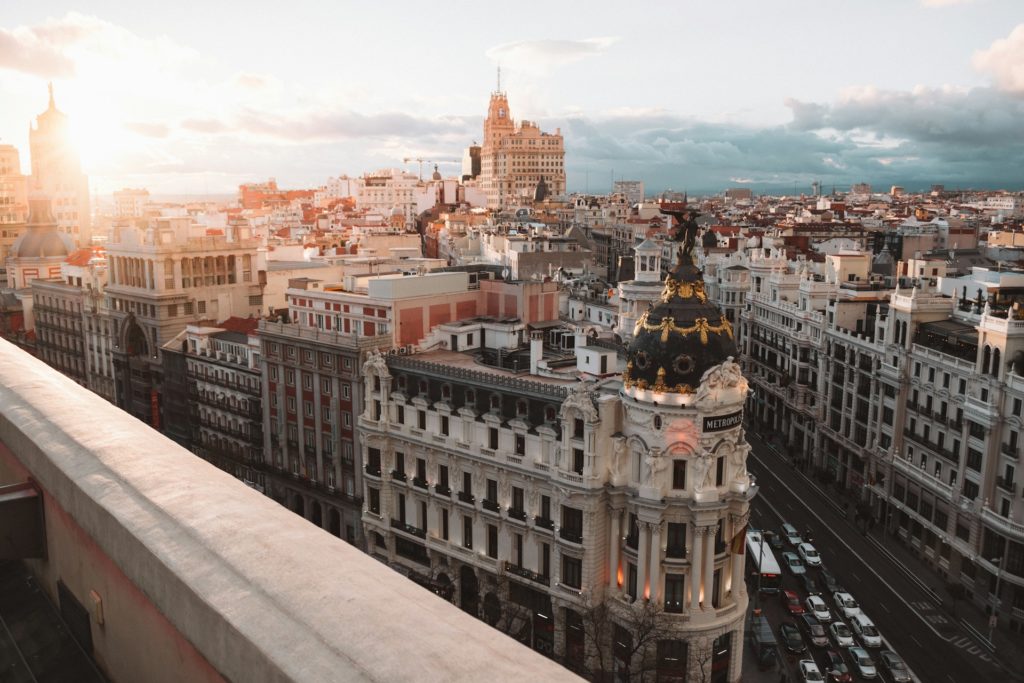
In recent years, Madrid has steadily established itself as one of the world’s leading luxury markets, not only for its exclusive real estate offer, but also for remarkable growth in the hotel sector, with more than 30 five-star hotels and the transformation of iconic spaces like the Generali Building and the Metrópoli on Gran Vía into exclusive hotel destinations. Spain’s capital has demonstrated an outstanding ability to attract an international public that values the luxury, security and high quality of life that characterize the city. How did it get to this point?
Madrid’s evolution into an epicenter of luxury is not the result of luck. According to data from the consulting firm Busquets Gálvez, in recent years, the hotel sector has grown 50%, driven by the interest of renowned global brands such as Four Seasons, Mandarin Oriental and Villamagna, which have chosen Madrid for renovations of assets in their portfolio or the establishment of new ones. This development has gone hand in hand with the transformation of former office buildings into luxury hotels, in direct response to the demand of sophisticated international tourists seeking exclusive experiences in the heart of Europe.
According to Élite Excellence and Noche Madrid, sustained growth of between 7% and 9% is forecast until 2027, with an average daily expenditure per person of €298, an increase of 27% over 2019 and 68% above the national average.
The luxury market boom in Madrid is not limited to the hotel sector. The growing demand for high-end housing has driven the development of luxury residential developments in iconic neighborhoods such as Salamanca, Chamberí and Chamartín. These areas, known for their elegance and exclusivity, have seen a proliferation of projects that not only offer high quality housing, but also a lifestyle of comfort and exclusivity. In a March article, the newspaper La Vanguardia, citing data from real estate companies Colliers and CBRE, highlighted the interest of top Latin American buyers, particularly from Venezuela and Chile, in the Spanish capital, both for residence and investment purposes.
This phenomenon has been reinforced by the collaboration between the hotel and residential sectors, with the emergence of developments linked to major hotel brands as Branded Residences, which offer a new concept of housing in Madrid. As pioneers of this exclusive real estate product, Arum has worked extensively to create residences that offer luxury services, providing their inhabitants with access to exclusive amenities and a level of personalized attention previously found only in the best hotels in the world.
New residential trends
As noted above, these dynamics have brought with them a boom in the conversion of tertiary-use buildings into tourism apartments, hotel establishments, university residences, coworking spaces, and temporary rental housing that have diversified the accommodation supply. The capital continues to respond to the growing demand for flexible spaces, ideal for tourists as well as for Masters students and professionals working on projects in the city.
This concept, known as Flex Living, is consolidating itself as a preferred option for those seeking a stay tailored to their needs, allowing greater comfort and versatility in their accommodation.
In addition, regulation in the tourism apartment sector has prompted investors to purchase full buildings, which allows them greater control over the management of spaces and optimizes the supply of services. The end result is benefits both for the hotel sector and the end customer. The professionalization of this segment guarantees a high standard of quality, reinforcing Madrid’s image as a safe and attractive destination.
Finally, Madrid’s political and economic stability has positioned the Spanish capital as a favorite for numerous multinational corporations when exploring where to establish their headquarters in Europe. The confidence in the city has driven a boom in real estate innovation investment, with both residential projects and large corporate developments on the rise.



